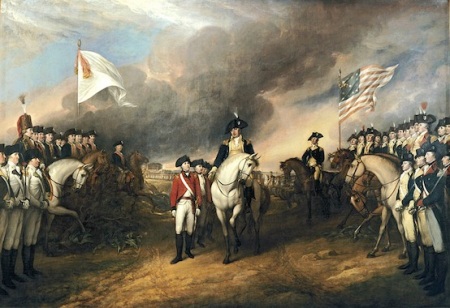My friend and neighbor, David White, celebrates Independence Day by hosting a picnic for his friends in his back yard in which we read the Declaration of Independence aloud.
Over the years David and his wife, Linda, added readings of the Declaration of Sentiments by the Women’s Rights Convention in Seneca Falls, N.Y., in 1848 and then 0f Frederick Douglass’s speech on “The Meaning of July Fourth for the Negro” in Rochester, N.Y., in 1852.
I like these additions, but I don’t like the way some of David’s guests treat them as indictments of the Founders for sexism and racism, rather than as examples of the working out of the Declaration’s meaning.
The Founders were men of their time, just as I am a person of my time. Maybe we in our time understand some things better than they did. Maybe we understand other things less well.
Either way, I do not condescend to my forefathers, who created the nation in which I live. I would not say I am proud to be an American. Rather I would say I am grateful to be an American. I am grateful for our Declaration of Independence, our Bill of Rights and our other founding documents which give us a philosophy and a standard of judgment for measuring our actions.
§§§
Here are some patriotic readings for Independence Day.
Speech on Conciliation With the Colonies by Edmund Burke to the House of Commons on March 22, 1775. [*]
“Give Me Liberty or Give Me Death” by Patrick Henry on March 23, 1775. [^]
Common Sense by Thomas Paine, published on February 14, 1776. [*]
The Declaration of Independence – In Congress, July 4, 1776.
King George’s response to both houses of Parliament on October 31, 1776. [*]
The American Crisis – Chapter One by Thomas Paine on December 23, 1776. [*]
Washington’s Farewell Address published on September 19, 1796 [*]
An Address Celebrating the Declaration of Independence by John Quincy Adams on July 4, 1821. Or just read the high points. [*]
Declaration of Sentiments and Resolutions by the Women’s Rights Convention on July 19-20, 1848.
The Meaning of July Fourth for the Negro by Frederick Douglass on July 5, 1852.
Abraham Lincoln’s First Inaugural Address on March 4, 1861. [^]
Gettysburg Address by Abraham Lincoln on November 19, 1863. [*]
Abraham Lincoln’s Second Inaugural Address on March 4, 1865. [^}
The Conquest of the United States by Spain by William Graham Sumner on January 16, 1899.
Eugene Debs’s Independence Day Address on July 4, 1901 [º]
A Fourth of July Speech by President Theodore Roosevelt on July 4,1903. [^]
Speech on the 150th Anniversary of the Declaration of Independence by President Calvin Coolidge on July 5, 1926.
Was There an American Revolution? by Robert Nisbet for the American Enterprise Institute in 1974.
[Added 7/5/14]
This Day in History (July 4): Two old friends die on the same day. Hat tip to Jack Clontz and his friend Marty.
Fourth of July Fact Roundup. Hat tip to Jack Clontz and his friend Marty.

Rethinking the Fourth of July by Bill Bigelow for Huffington Post is an example of the attitude I criticize.
All the facts in the article are correct, so far as I know, but they lack context. What the world saw as important in the American Revolution was not its limitations, but its radicalism—its idea that ordinary human beings, without aristocratic blood or royal divine right, were capable of governing themselves.
Furthermore the American Revolution, unlike many subsequent revolutions, did not culminate in mass executions or a military dictatorship (although, admittedly, the seeds were planted for a bloody civil war). The Founders wrought well. With all their human faults, we in our day have much to learn from them.
[*] Added July 2019.
[º} Added July 2020
[^] Added July 2021
Tags: American Revolution, Declaration of Independence, Fourth of July, Independence Day


Leave a comment